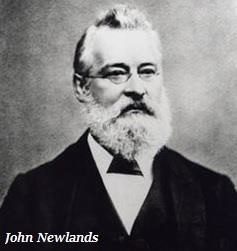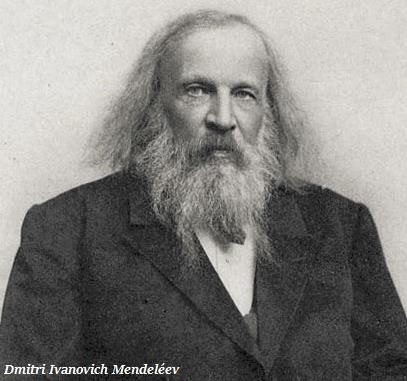
- Chemistry - Home
- Matter In Our Surroundings
- Is Matter Around Us Pure
- Chemistry - Atoms & Molecules
- Chemistry - Structure Of The Atom
- Chemical Reactions and Equations
- Chemistry - Acids, Bases, and Salts
- Materials: Metals and Non-Metals I
- Chemistry - Metals & Non-Metals II
- Carbon & its Compounds
- Periodic Classification Of Elements
- Synthetic Fibres and Plastics
- Chemistry - Coal And Petroleum
- Chemistry - Combustion And Flame
Periodic Classification Of Elements
Introduction
There are about 115 elements have been known to us till today.
Based on their properties, all the elements are arranged in order, known as periodic table.
Johann Wolfgang Dbereiner, a German scientist, first attempted to arrange the elements in 1817.
John Newlands, an English scientist, also attempted to arrange the then known elements (in 1866).
John Newlands had followed the order of increasing atomic masses to arrange the elements.
Newlands started with the element having the lowest atomic mass (such as hydrogen) and ended at thorium, which was the 56th element (at his time).

Newlands arrangement of elements is known as Law of Octaves, as in his arrangement every eight element had the properties similar to that of the first. E.g. the properties of lithium and sodium were found to be the same.
| Sa (do) | re (re) | Ga (mi) | Ma (fa) | Pa (so) | da (la) | ni (ti) |
|---|---|---|---|---|---|---|
| H | Li | Be | B | C | N | O |
| F | Na | Mg | Al | Si | P | S |
| Cl | K | Ca | Cr | Ti | Mn | Fe |
| Co & Ni | Cu | Zn | Y | In | As | Se |
| Br | Rb | Sr | Ce & La | Zr |
Newlands also compared it with the octaves that found in music (see the table given above).
In the Indian music, the seven musical notes are sa, re, ga, ma, pa, da, ni; however, in the west, the musical notes are do, re, mi, fa, so, la, ti.
Further, in order to fit some elements into his Table, Newlands put two elements in the same cell (see the table given above cobalt & nickel kept in same cell), but this technique did not work, as they have different properties.
However, the law of octave had limitation, as was applicable up to calcium only; and, after calcium every eighth element had not the properties similar to that of the first.
Mendelevs Periodic Table
Dmitri Ivanovich Mendelev, a Russian chemist, who successfully attempted to arrange the elements.
Mendelev arranged the elements based on their (elements) fundamental property, the atomic mass, as well as on the similarity of chemical properties.
During the Mendeleevs time, only 63 elements were known.
Mendelevs Periodic Table consists of vertical columns known as groups and horizontal rows known as periods.

-
Mendelevs Periodic Law states that
The properties of elements are the periodic function of their atomic masses.
Mendelev arranged the sequence in inverted fashion so that elements with similar properties could be grouped together.
Mendelev left space for some elements, which were not discovered at that time; he boldly predicted about the existence of future elements.
One of the biggest limitation of Mendelevs Periodic formula is - no fixed position has been assigned to hydrogen in the Periodic Table.
Modern Periodic Table
In 1913, Henry Moseley, an English physicist discovered that the atomic number of an element is a more fundamental property in comparison to its atomic mass.
Based on Moseleys discovery, Mendelevs Periodic Law was modified and atomic number was adopted as the basis of Modern Periodic Table.
-
The Modern Periodic Law states −
Properties of elements are a periodic function of their atomic number.
18 vertical columns known as groups and 7 horizontal rows known as periods are defined in the Modern Periodic Table.
In Modern Periodic Table, the elements are arranged in such a way that it shows periodicity of properties such as atomic size, valency, or combining capacity and metallic and non-metallic characteristics (of elements).
In Modern Periodic Table, the metallic character decreases across a period and increases down the group.
On the other hand, non-metals are electronegative, as they tend to form bonds by gaining electrons.
In Modern Periodic Table, the non-metals are placed on the right-hand side (from the top).